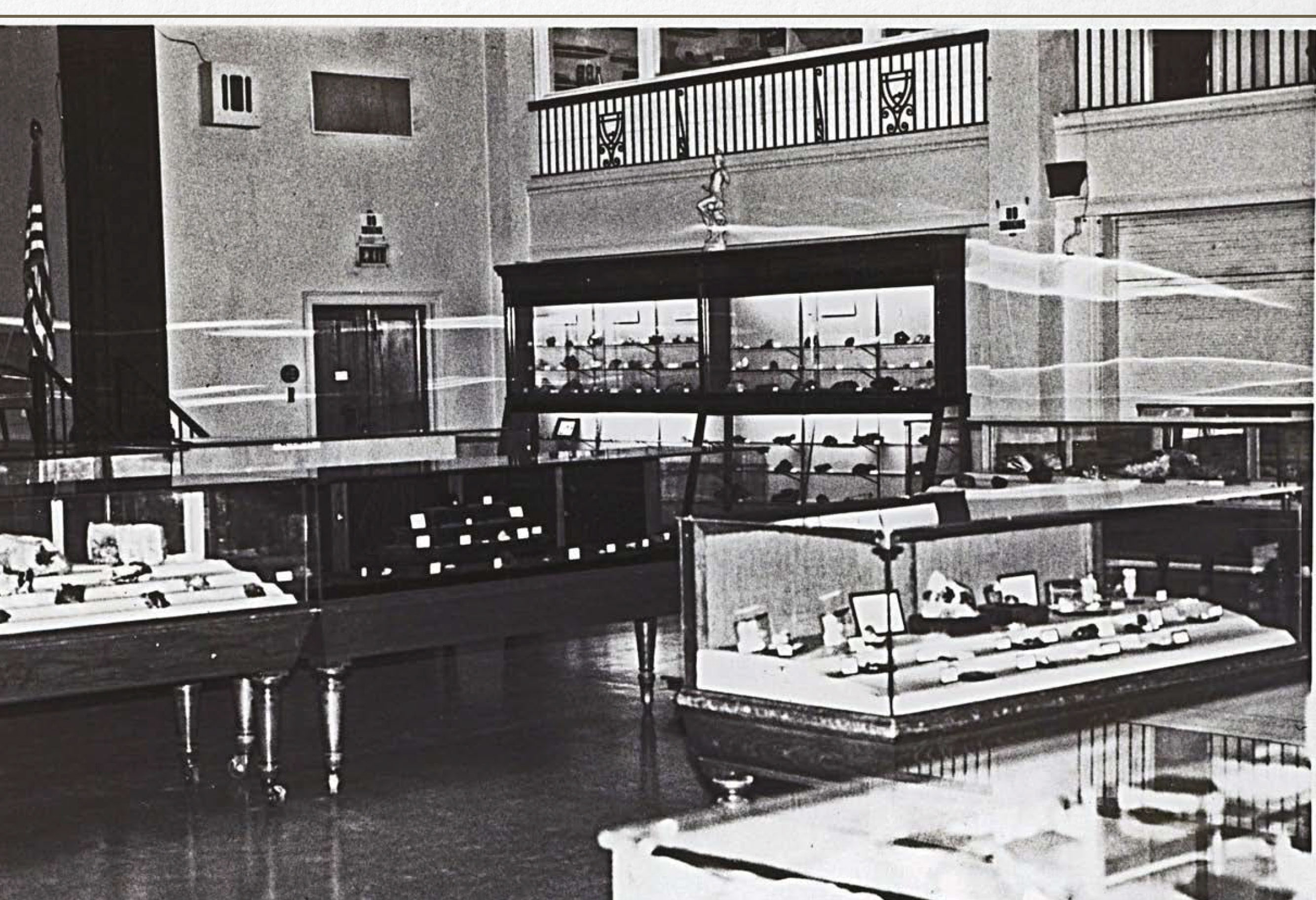
Overview of the excellent mineral museum at the college in Butte, Montana deposit of D.C.
Butte, Montana is referred to as “The Richest Hill on Earth” based on the copper wealth mined there. It was rich in copper minerals but not collector specimens. A list of minerals at Butte proves to be a bit short. Despite years of mining countless ore veins, only one new mineral, colusite, has ever been found at Butte. Other large copper deposits like Bisbee, Tsumeb, and Cornwall have each been credited with at least three hundred different mineral species, including many secondary species. Butte’s list of mineral species does not even reach 100.
Many other copper deposits are known for quantities of colorful azurite, malachite, cuprite, native copper. How many colorful azurite and malachite specimens have you heard about from Butte? For the most part, Butte species, though secondary, are gray, gray-black, or black. The majority of Butte’s minerals are sulfides, not carbonates, arsenates, or oxides. The deposit was composed mainly of deeply seated veins of covellite, enargite, chalcopyrite, chalcocite, bornite, and rare copper species like digenite, colusite, and djurleite.